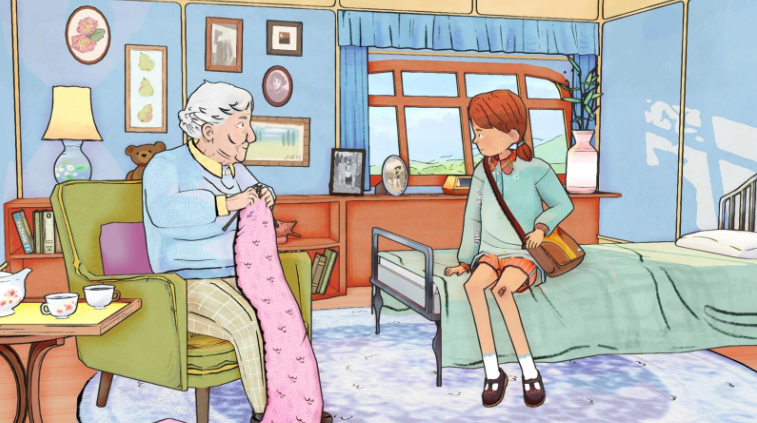Assist airborne hospital patients in ‘Wayward Strand’
Watch a school journalist bond with elderly patients
“Wayward Strand” is a graphic adventure with nostalgic artwork and unique characters.
Rating: B
Art Credit: Ghost Pattern
November 21, 2022
As a journalist for her school’s newspaper, Casey Beaumaris is constantly looking for article ideas. While she reluctantly accompanies her mother to work over her three-day holiday, she hatches a plan that could make her vacation more exciting. After all, what could be more interesting than the mysteries of an airborne hospital?
Developed by Ghost Pattern, a game development collaboration with industry veterans like artist Marigold Bartlett and writer Jason Bakker, “Wayward Strand” takes players on a simple journey exploring the concept of time through the eyes of a curious teenage newswriter.
Players control Casey as she interviews the patients roaming the hallways of the hospital, along with the doctors and nurses taking care of them. There were times when certain patients would ask me to help them by fetching an item, or alerting one of the nurses for assistance. I was even able to eavesdrop on some conversations, writing down more information in a notebook. The more time a player spends on the airship, the more events occur, such as the upcoming VIP planning to come abroad, and the unfortunate health diagnoses discovered about each patient.
Booting up the game, players are immediately greeted with the unique artstyle the game has to offer. It reminded me of the fantasy picture books I used to read as a child, so it brought back a sense of nostalgia I enjoyed. Each chapter’s beginning and end includes beautiful illustrations that look like they were painted with watercolor, adding a unique touch and whimsical feeling to the story.
The controls are extremely simple on the Nintendo Switch, using the left stick to move Casey left and right as it’s a 2D game, and the A/B/X/Y buttons to select her actions and words. There were times when two movement options used the same button and it selected the option I didn’t want, which was inconvenient at times.
The game occurs in a span of three chapters, one for each day of Casey’s three day weekend. Each chapter lasts about an hour and a half in real time, and the fact that I was not able to manually save my progress in between chapters is one of my biggest complaints. I was afraid that I would have to start over from the beginning, so I ended up playing until completion, feeling drained after the end of each chapter.
Each day, Casey spends time at the airborne hospital from around 8:45 a.m. to 5:30 p.m., and time never stops ticking. This created some stress for me because I didn’t want to miss out on any significant events, but perhaps this mindset was formed because my favorite games, especially Stardew Valley, have similar concepts that require the player to work as efficiently as possible every in-game day.
I found it hard at first to find the game interesting while playing the first chapter. Players interact with the same dozen people the entire day, but the way each individual has their own schedule keeps it entertaining. Getting the chance to silently, but serenely eat lunch with the mute Ms. Hummel, listen to Mr. Avery’s intriguing stories, or converse with Mr. Pruess about his life traveling the world with his late wife introduced me to their backstories. It all comes together to show players what it’s like to grow old, as well as why you should cherish your youth.
It’s also worthy to mention that every single character is fully voiced to perfection, with each voice matching the character’s appearance and personality. I could tell through her tone that Dr. Bouchard did not enjoy talking to me whatsoever, while Ida was extremely welcoming and inviting from the start. It enhanced the gameplay experience even further, and added to the uniqueness of each person I interacted with.
Unfortunately, the ending of the game is quite lackluster. I waited through the entire credits scene to see if there would even be a small glimpse of the result of Casey’s three days, but nothing popped up. I simply said goodbye to the patients and staff, a known detail throughout my playthrough, and that was it. It was a large buildup that ended anticlimactically.
All in all, “Wayward Strand” is a wonderful video game, crafted as an intricate, interactive picture book. I wish there was more to explore, but perhaps the entire lesson of this story is to treasure the time you spent with the ones you’ve grown close to instead of wishing for more.








